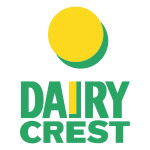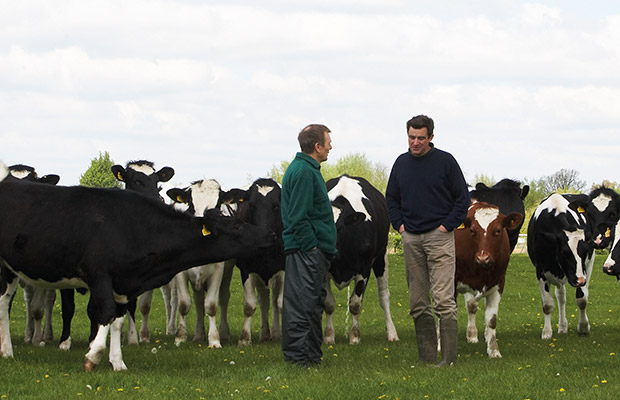Dairy Crest

Dairy Crest is an added value dairy foods business. The company's performance is driven by a strong portfolio of branded dairy products created from a rich and varied history. Dairy Crest has grown from the wholly owned subsidiary of the Milk Marketing Board and since its floatation in 1996 has become the leading British-owned dairy foods business.
Download PDF
Using close to 2bn litres of milk every year, Dairy Crest processes and delivers fresh milk to most major UK supermarkets. Dairy Crest's doorstep delivery service delivers fresh milk, together with a wide range of other products, to around 1.2m residential and business customers throughout England and Wales. Dairy Crest also makes some of the best known brands in the UK dairy sector, such as Cathedral City, and the leading cheese brand in the UK, as well as the Country Life and Clover product range.

Dairy Crest has an extensive network of farm suppliers who make a critical contribution to the continued success of the business. Their procurement strategy concentrates on delivering sustainable value, as well as excellent quality and service, to customers and consumers. Most of the fresh raw milk they use each year is bought from the nearly 1,100 directsupplying farmers with whom Dairy Crest has an exclusive contractual relationship. In the dairy industry, the supplier-customer relationship might be considered a little unusual. While in most industries suppliers are typically competing to win business with customers, the reverse often applies in the dairy industry – the customers (i.e. dairies) are more often competing to enrol and keep farmers. Therefore, the competition Dairy Crest faces downstream (in the dairy products market) is just as tough upstream. This makes it essential for Dairy Crest to continuously develop and strengthen its relationships with its farming partners.
An informed analysis of the current situation is the basis for any improvement programme
Dairy Crest recognised that the first step in developing stronger relationships with its farmers was to gain a better understanding of how they were perceived as a milk buyer. To do so, Dairy Crest needed to obtain honest feedback from this key stakeholder group, which posed two problems:
-
Firstly, there is the logistical challenge. Obtaining and collating feedback from nearly 1,100 different suppliers is a huge task and is impossible to achieve without a robust methodology and dedicated resource.
-
Secondly, it is known that relations between farmers and milk buyers across the whole industry have been strained over the years, and there still exists a level of uncertainty that could inhibit open and honest feedback.
It was in this context that Dairy Crest decided to partner with an independent third party to conduct their research and selected State of Flux. While not experts in the dairy industry, we have developed a robust methodology for collecting and analysing supplier feedback through our
Voice of the Supplier projects. It was this combined with our willingness to listen, learn and assimilate industry knowledge quickly that gave the management team at Dairy Crest the confidence to go with State of Flux for this project.
We built upon our standard research methodology to create a bespoke project tailored to the dairy industry
The tried and tested methodology of our Voice of the Supplier offering, developed and refined over years, across a range of industry sectors – was the starting point. The Voice of the Supplier projects focus on various aspects of the relationships that a company has with some of its suppliers, usually to gain a holistic understanding of:
-
How these relationships are perceived in an absolute sense.
-
How they compare with the known or presumed competitors of the commissioning organisation. It should be noted here that competitors in this context do not always mean in the same industry sector or market. A competitor when it comes to products or services from a supplier could well be in a totally different line of business.
A process that was fit for purpose
The aptly named Voice of the Farmer variant of this process developed for Dairy Crest, had to address a number of unique challenges. Firstly, the suppliers in this case are often small family businesses. Secondly, the ‘CEO’ of these businesses is often also the COO, CFO and the production operator. It was unlikely they would be sitting in front of a computer checking their emails. It was therefore vital that the communication strategy be carefully considered to engage all farmers. At each stage of the project, we revised our standard approach to ensure it was fit for purpose.
Step 1 – Questionnaire design
Our initial thoughts were that we would need to design a completely new question. However, when we reviewed our standard questions with Dairy Crest it became evident that the same key themes were just as relevant to the dairy industry as others. What was needed was a common sense approach to wording the questions in a way that was relevant to the issues in the dairy sector and could be easily understood by a wide cross-section of farmers. Unnecessary ‘business’ language was avoided – it was crucial that Dairy Crest would not miss important feedback from its farmers because communication style and channels were not adapted to the target groups. We collaborated closely with Dairy Crest on this and sense checked the questions with industry ‘insiders’.
Step 2 – Online survey
We debated at length the best way to reach out and engage farmers in the process. We concluded that for the most part the farming community is as technically ‘savvy’ as any other, and that the main thrust of our survey strategy would be via email. A paper copy of the survey was also made available, but in the event only a handful were used. It was recognised that online surveys are on the increase and it was important that the Dairy Crest Voice of Farmer would stand out from the crowd. A novel solution was introduced involving Dairy Crest making a £5 donation to a farming charity for every survey response received.
Step 3 – Data analysis
By combining question responses and the free text facility embedded in the questionnaire, we were able to identify common themes emerging from the responses. In some cases these were related to the key themes around which the question set was designed, but in other cases we picked up key words or phrases that emerged across a range of responses. This helped us identify useful feedback for Dairy Crest and also the areas we wanted to explore further during the interview stage.
At Dairy Crest we believe the high quality milk from our British farms is our greatest asset. We want to do all we can to understand the needs of our farmers in order to ensure a working relationship based on trust and pride. We see the Voice of the Farmer as key to understanding the needs of our farmers and ensuring we continue to work as partners.
Mike Sheldon, Group Procurement Director
Step 4 – Interviews
The usual approach for Voice of the Supplier interviews is to conduct them via scheduled telephone conferences. For Voice of the Farmer, we recognised that this approach would not work. For Dairy Crest’s farmers business is more often conducted out and about around the farm or over the kitchen table. We scheduled follow up ‘on-farm’ interviews with a crosssection of farmers representing different regions, farm sizes and contract types, to ensure all profiles were represented in the picture drawn from the farmers’ feedback. Our team travelled over 1,500 miles visiting farms from the Fens of Lincolnshire to Cornwall, and spent at least an hour at each interview to explore their points of view in more detail.
Step 5 – Report and recommendations
The findings of the survey and interviews have been fully documented and have revealed a number of opportunities. These will be presented to, and discussed with the management team at Dairy Crest.
Step 6 – Planning workshop
The final step will be to distil the survey and interview feedback down into a number of actionable areas, and develop the necessary plans to build on the strengths of existing relationships. We will also develop action plans in the areas identified for improvement. This will be done at a facilitated workshop where the focus will be on action.
Going forward, communication and readiness for change are key to reap the full benefits of the Voice of the Farmer project
From the outset, we stressed the importance of:
-
Ongoing communication – From the outset communication has been key, and maintaining this as the project reaches the end of its first phase is vital. All stakeholders, both internal and most importantly the farmers who have given up their time to participate, need to be kept informed and involved.
-
Commitment to implement change – Internal resistance to change or lack of follow-up after the completion of the project could be even more detrimental to Dairy Crest than the previous status quo. On the other hand, the benefits of a Voice of the Farmer – or its Voice of the Supplier equivalent – can be game-changing if a clear implementation strategy and communication plan is executed in a timely fashion.
The feedback we sought from farmers helped us identify where change is necessary for Dairy Crest to become a ‘customer of choice’. Responding to this feedback will, ultimately, allow Dairy Crest to improve the implementation of its milk supply strategy – a core element of Dairy Crest’s overall business plan.